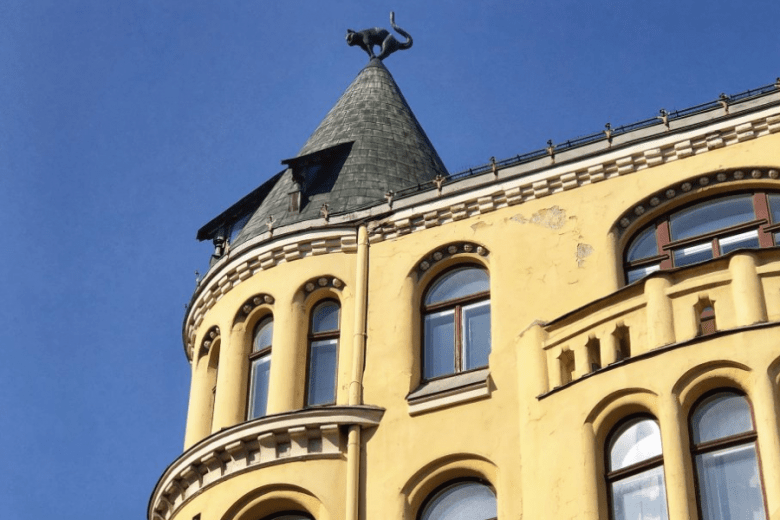
Wrought-copper cats stand on the corner turrets of a building facing the Great Guild on Līvu Square, their backs arched and tails poised as if readying for the final leap. The famous and peculiar building, once scandalous and even been the cause of a lawsuit, was named the Cat House because of these figures. Today, the cats are not only squatting on the roof of the building, but they dwell on the ground floor too.
The Cat House, designed by the architect Friedrich Schefel, was built in 1909. Friedrich Schefel and Heinrich Scheel are regarded as pioneers of Riga Art Nouveau architecture. The building was owned by a wealthy Latvian trader who, out of bitter resentment for not being admitted to the Great Guild, put cat figures bearing expressive postures on the roof of his building. Tails of the cat figures were turned to the Great Guild building thus expressing the owner's attitude towards the offending organization of traders. The Cat House, built in the style of a medieval castle, was completed with colours of Art Nuveau palette, bringing colourfulness and romantics to the entire city and a share of sarcasm on the turrets of the house too.
At the moment a restaurant is being run on the ground floor of the building while other parts of the Cat House are "hosting" offices.
